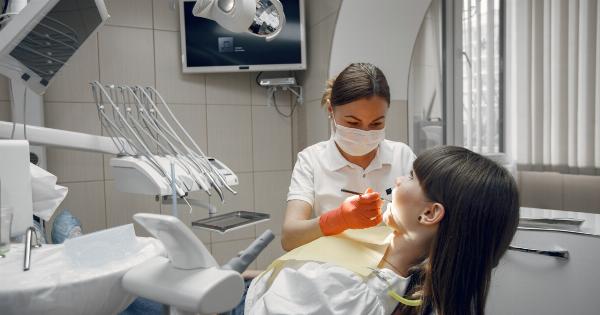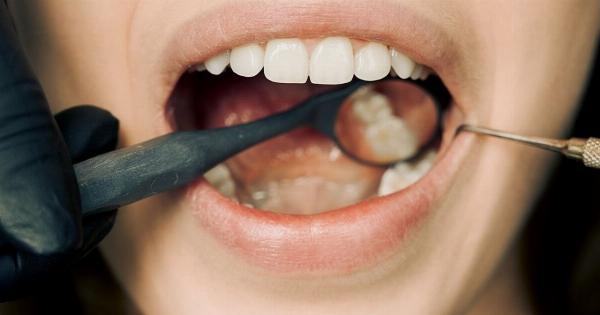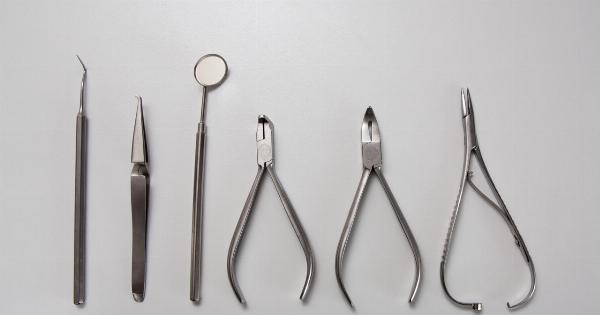Gum disease, also known as periodontal disease, is a common oral health issue that affects millions of people worldwide. Although it may seem harmless initially, gum disease can have serious consequences if left untreated.
From mild gum inflammation to severe infection and tooth loss, the risks associated with gum disease are perilous. In this article, we will delve deeper into the causes, symptoms, and treatment options of gum disease to help you better understand this prevalent condition and take necessary precautions to protect your oral health.
Causes of Gum Disease
Gum disease primarily occurs due to poor oral hygiene habits, allowing harmful bacteria to accumulate in the mouth. The bacteria form a sticky film called plaque which, if not removed through regular brushing and flossing, can harden into tartar.
Tartar buildup can then cause gum irritation and inflammation, leading to the development of gum disease.
Other factors that contribute to gum disease include:.
- Smoking or tobacco use, which weakens the immune system and makes it harder for the body to fight off infections
- Hormonal changes in women, such as during pregnancy or menopause, that make gums more sensitive and prone to inflammation
- Genetics, as some individuals may be more susceptible to gum disease due to inherited factors
- Chronic illnesses like diabetes, cancer, and HIV that weaken the immune system and increase the risk of gum disease
- Poor nutrition, which can compromise the body’s ability to fight off infections and maintain healthy gums
- Certain medications that reduce saliva flow or cause gum overgrowth, such as anticonvulsants or immunosuppressants
Symptoms of Gum Disease
Identifying the early signs of gum disease is crucial for prompt intervention and prevention of further damage. Here are some common symptoms to watch out for:.
- Bleeding gums: Gums that bleed during brushing or flossing are often an early indication of gum disease.
- Redness and swelling: Inflamed gums that appear red and swollen are a sign of gingivitis, the earliest stage of gum disease.
- Bad breath: Persistent bad breath, despite proper oral hygiene, can be caused by gum disease and its associated bacteria.
- Gum recession: As gum disease progresses, the gums may start to recede, making the teeth appear longer than usual.
- Loose or shifting teeth: Advanced gum disease can affect the supporting structures of the teeth, leading to tooth mobility or shifting.
- Pain or sensitivity: When gum disease becomes severe, you may experience pain while chewing or increased sensitivity to hot or cold temperatures.
Stages of Gum Disease
Gum disease typically progresses through three main stages: gingivitis, periodontitis, and advanced periodontitis. Understanding these stages is crucial for effective treatment and management. Let’s explore each stage in more detail:.
Gingivitis:
Gingivitis is the mildest form of gum disease and occurs when plaque buildup causes gum inflammation. It is characterized by red, swollen gums that may bleed easily.
However, at this stage, the damage is often reversible with proper oral hygiene and regular professional cleanings.
Periodontitis:
If left untreated, gingivitis can progress to periodontitis, which involves the deeper structures supporting the teeth. In this stage, the gums pull away from the teeth, forming pockets that become infected.
The immune system responds by attacking the bacteria, but the ensuing inflammation can damage the connective tissues and bone that hold the teeth in place.
Advanced Periodontitis:
In the most severe stage of gum disease, the bacterial infection continues to destroy the gums, bones, and connective tissues that support the teeth. Ultimately, this can lead to tooth loss and significant oral health complications.
Treatment Options
Effective treatment for gum disease depends on the stage and severity of the condition. The main goals of treatment are to control the infection, reduce gum inflammation, and restore the health of the supporting structures.
Here are some common treatment options:.
- Professional dental cleaning: Scaling and root planing, also known as deep cleaning, is a common procedure to remove plaque and tartar from below the gumline and smooth the tooth roots to discourage further buildup.
- Medications: Antibacterial mouth rinses, antimicrobial gels, and oral antibiotics may be prescribed to help control infection and reduce inflammation.
- Gum surgery: In advanced cases, surgical intervention may be required to repair damaged gums, remove infected tissue, or regenerate lost bone.
- Improved oral hygiene: Brushing twice a day, flossing daily, and using antibacterial mouthwash can effectively prevent and manage gum disease.
- Lifestyle changes: Quitting smoking, adopting a balanced diet, managing stress levels, and controlling chronic diseases can significantly improve gum health.
Preventing Gum Disease
Prevention is always better than cure when it comes to gum disease. By adopting proper oral hygiene habits and making smart lifestyle choices, you can significantly reduce your risk of developing gum disease.
Here are some preventive measures to consider:.
- Brush your teeth at least twice a day using fluoride toothpaste.
- Floss daily to remove plaque and food particles from between the teeth.
- Use an antimicrobial mouthwash to kill bacteria and freshen your breath.
- Maintain a balanced diet rich in fruits, vegetables, and whole grains.
- Avoid smoking or using tobacco products.
- Replace your toothbrush every three to four months or sooner if the bristles become frayed.
- Visit your dentist for regular check-ups and professional cleanings.
Conclusion
The perilous risk of gum disease should not be underestimated. From its early stages of gingivitis to advanced periodontitis, the consequences of untreated gum disease can be severe.
Therefore, maintaining good oral hygiene practices, staying aware of the symptoms, and seeking prompt treatment are essential steps in safeguarding your oral health. By taking preventive measures and addressing gum disease early on, you can preserve your smile and maintain optimal gum health for years to come.





























